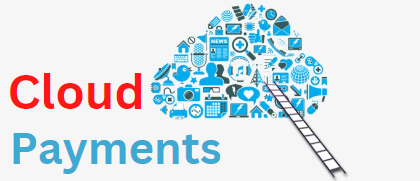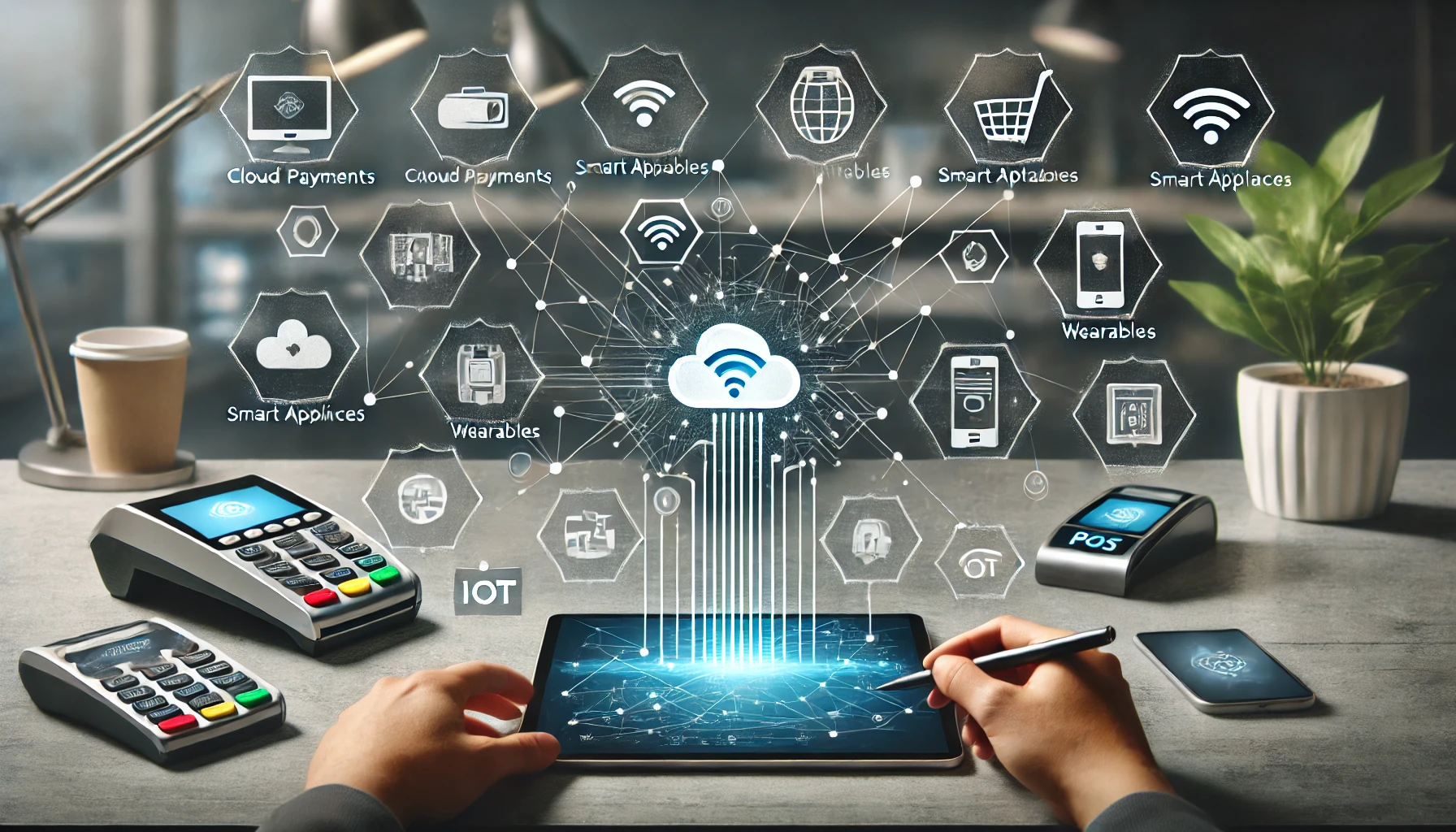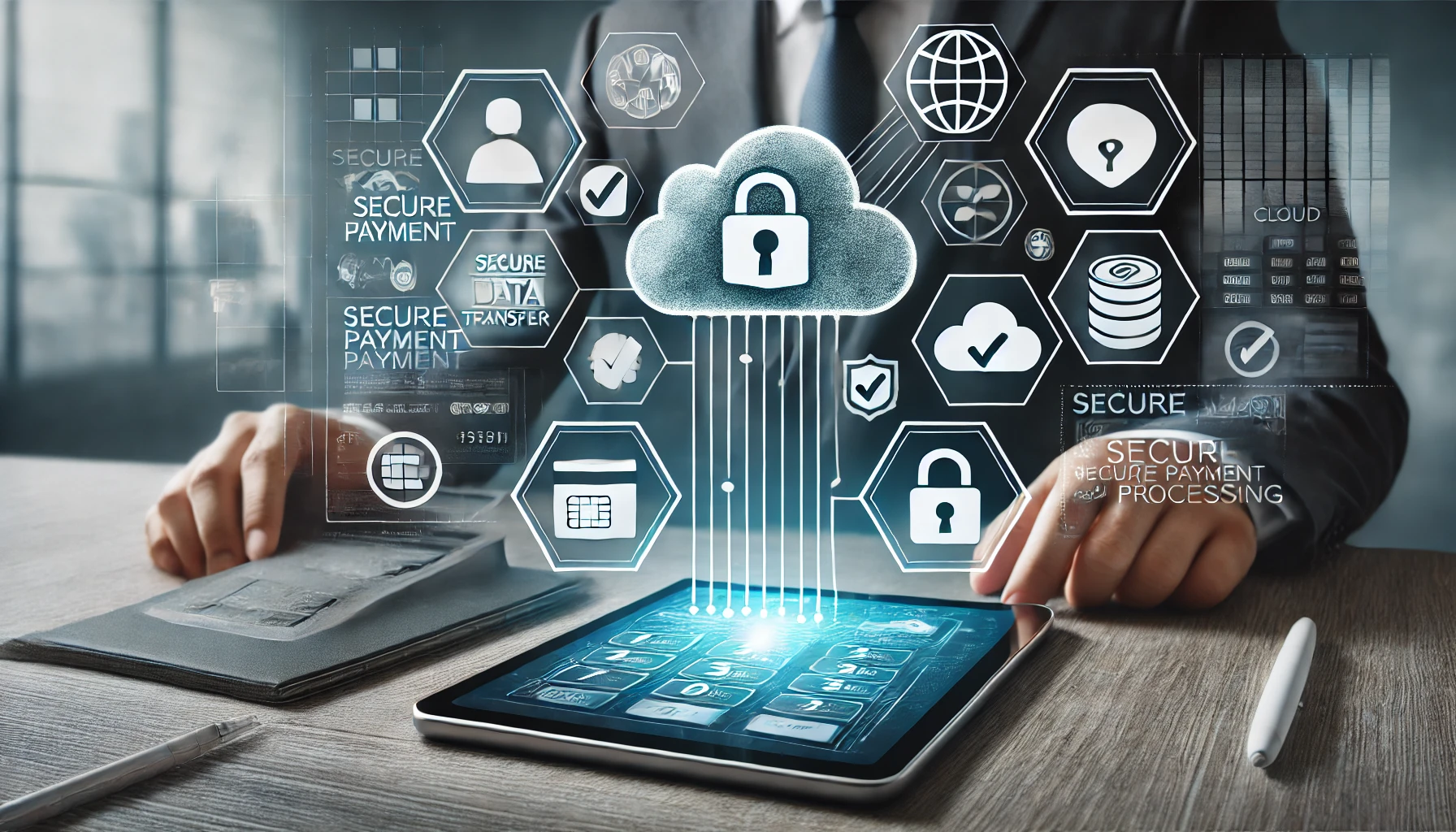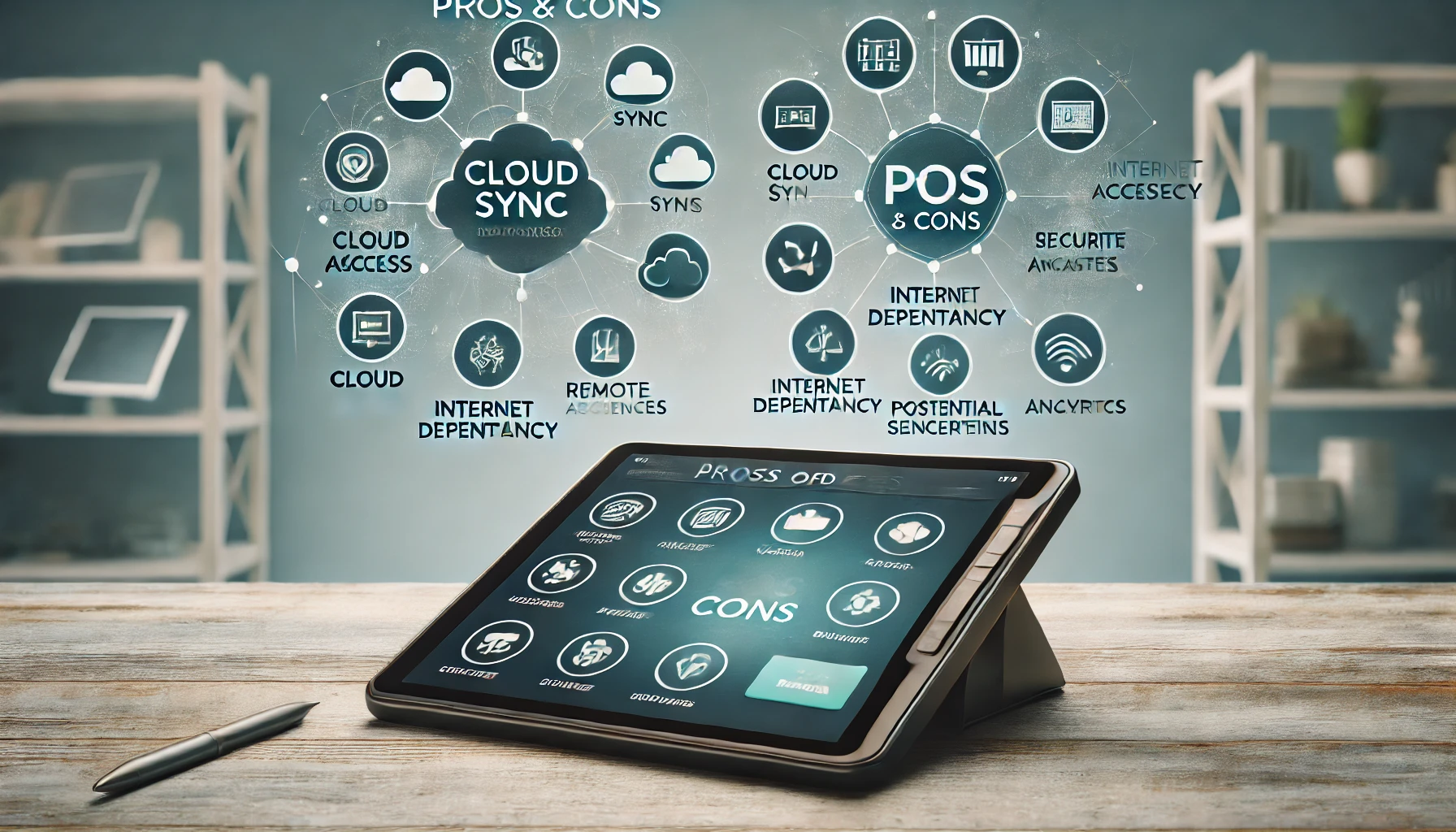Best Practices for Cloud Payment Security
In today’s digital age, businesses are increasingly relying on cloud payment systems to streamline their operations and enhance customer convenience. Cloud payment systems offer numerous benefits, such as scalability, cost-effectiveness, and flexibility. However, with the rise in cyber threats and data breaches, ensuring the security of cloud payment systems has become a top priority for businesses.
This article will explore the best practices for cloud payment security, including understanding the risks, implementing strong authentication measures, encrypting data, monitoring and auditing systems, ensuring compliance, educating employees, and integrating fraud detection and prevention measures.
Understanding the Risks of Cloud Payment Processing
Cloud payment processing involves the storage and transmission of sensitive customer payment information, making it an attractive target for cybercriminals. The risks associated with cloud payment processing include data breaches, unauthorized access, identity theft, and financial fraud. According to the 2020 Cost of a Data Breach Report by IBM, the average cost of a data breach is $3.86 million. Therefore, it is crucial for businesses to understand these risks and take proactive measures to mitigate them.
One of the primary risks of cloud payment processing is the potential for data breaches. Cybercriminals can exploit vulnerabilities in cloud systems to gain unauthorized access to sensitive payment information. This can lead to financial losses, reputational damage, and legal consequences for businesses. Additionally, unauthorized access to cloud payment systems can result in identity theft, where personal and financial information of customers is stolen and misused.
Best Practices for Securing Cloud Payment Systems
To mitigate the risks associated with cloud payment processing, businesses should implement a range of best practices. These practices include:
- Conducting thorough due diligence: Before selecting a cloud service provider for payment processing, businesses should conduct a comprehensive evaluation of the provider’s security measures. This includes assessing their data encryption protocols, access controls, intrusion detection systems, and incident response procedures. It is also important to review the provider’s track record and reputation in the industry.
- Implementing multi-factor authentication: Strong authentication measures are essential for securing cloud payment systems. Businesses should require users to provide multiple forms of identification, such as passwords, biometrics, or security tokens, to access payment data. This helps prevent unauthorized access even if one factor is compromised.
- Limiting access privileges: Businesses should adopt the principle of least privilege, which means granting users only the minimum level of access necessary to perform their job functions. This reduces the risk of insider threats and limits the potential damage that can be caused by compromised user accounts.
- Regularly updating and patching systems: Cloud service providers should promptly apply security patches and updates to their systems to address vulnerabilities and protect against known threats. Businesses should also ensure that their own systems and applications are regularly updated to maintain a secure environment.
- Implementing strong encryption: Encryption is a crucial component of cloud payment security. Payment data should be encrypted both in transit and at rest. Transport Layer Security (TLS) protocols should be used to encrypt data during transmission, while data at rest should be stored in encrypted form using strong encryption algorithms.
- Implementing intrusion detection and prevention systems: Intrusion detection and prevention systems (IDPS) can help identify and block unauthorized access attempts in real-time. These systems monitor network traffic, analyze patterns, and detect suspicious activities that may indicate a potential security breach.
- Regularly monitoring and auditing systems: Continuous monitoring and auditing of cloud payment systems are essential for detecting and responding to security incidents promptly. This includes monitoring access logs, network traffic, and system logs for any signs of unauthorized activity or anomalies.
- Conducting regular vulnerability assessments and penetration testing: Businesses should regularly assess the security of their cloud payment systems by conducting vulnerability assessments and penetration testing. These tests help identify weaknesses and vulnerabilities that could be exploited by attackers.
- Ensuring compliance with industry standards and regulations: Businesses should ensure that their cloud payment systems comply with relevant industry standards and regulations, such as the Payment Card Industry Data Security Standard (PCI DSS). Compliance with these standards helps ensure the implementation of robust security controls and protects against potential legal and financial consequences.
- Educating employees on cloud payment security best practices: Employees play a crucial role in maintaining the security of cloud payment systems. Businesses should provide comprehensive training and awareness programs to educate employees about the risks associated with cloud payment processing and the best practices for securing payment data. This includes training on password hygiene, phishing awareness, and safe browsing habits.
Implementing Strong Authentication Measures for Cloud Payments
Authentication is the process of verifying the identity of a user or system attempting to access cloud payment systems. Strong authentication measures are essential for preventing unauthorized access and protecting sensitive payment data. There are several authentication methods that businesses can implement to enhance the security of cloud payments:
- Passwords: Passwords are the most common form of authentication. However, they are also vulnerable to various attacks, such as brute force attacks and password guessing. To strengthen password security, businesses should enforce password complexity requirements, such as a minimum length, a combination of uppercase and lowercase letters, numbers, and special characters. It is also important to educate users about the importance of using unique and strong passwords and to regularly change them.
- Two-factor authentication (2FA): Two-factor authentication adds an extra layer of security by requiring users to provide two forms of identification. This typically involves combining something the user knows (such as a password) with something the user possesses (such as a security token or a mobile device). Even if an attacker manages to obtain the user’s password, they would still need access to the second factor to gain entry.
- Biometric authentication: Biometric authentication uses unique physical or behavioral characteristics, such as fingerprints, facial recognition, or voice recognition, to verify a user’s identity. Biometrics offer a high level of security as they are difficult to replicate or forge. However, businesses should ensure that biometric data is securely stored and processed to protect against potential privacy breaches.
- Security tokens: Security tokens are physical devices that generate one-time passwords or codes that users must enter along with their passwords to authenticate themselves. These tokens can be in the form of hardware devices or mobile applications. Security tokens provide an additional layer of security as the generated codes are time-limited and cannot be reused.
- Single sign-on (SSO): Single sign-on allows users to authenticate themselves once and gain access to multiple cloud payment systems without the need to enter separate credentials for each system. SSO enhances convenience for users while maintaining security by centralizing authentication and access control.
Encrypting Data in Transit and at Rest for Cloud Payment Security
Encryption is a critical component of cloud payment security as it ensures that payment data remains confidential and protected from unauthorized access. Encryption involves converting plaintext data into ciphertext using encryption algorithms and keys. There are two main types of encryption that businesses should implement for cloud payment security:
- Encryption in transit: Encryption in transit refers to the process of encrypting data as it is transmitted between the user’s device and the cloud payment system. This is typically achieved using Transport Layer Security (TLS) protocols, which establish a secure and encrypted connection between the user’s device and the cloud server. TLS ensures that payment data cannot be intercepted or tampered with during transmission.
- Encryption at rest: Encryption at rest involves encrypting payment data when it is stored in databases or on physical storage devices. This ensures that even if an attacker gains unauthorized access to the data, they will not be able to read or use it without the encryption keys. Businesses should use strong encryption algorithms, such as Advanced Encryption Standard (AES), to encrypt payment data at rest. The encryption keys should be securely managed and stored separately from the encrypted data.
Regularly Monitoring and Auditing Cloud Payment Systems
Regular monitoring and auditing of cloud payment systems are essential for detecting and responding to security incidents promptly. Monitoring involves the continuous observation of system logs, network traffic, and access logs to identify any signs of unauthorized activity or anomalies. Auditing involves conducting periodic reviews and assessments of the security controls and processes in place to ensure compliance with security policies and industry standards. Here are some best practices for monitoring and auditing cloud payment systems:
- Implementing a Security Information and Event Management (SIEM) system: SIEM systems collect and analyze security event logs from various sources, such as firewalls, intrusion detection systems, and servers. They provide real-time monitoring and alerting capabilities, allowing businesses to detect and respond to security incidents promptly.
- Setting up intrusion detection and prevention systems (IDPS): IDPS systems monitor network traffic and system logs for signs of unauthorized access attempts or suspicious activities. They can automatically block or alert administrators about potential security breaches.
- Conducting regular vulnerability assessments: Vulnerability assessments involve scanning cloud payment systems for known vulnerabilities and weaknesses. This helps identify potential entry points for attackers and allows businesses to take proactive measures to address these vulnerabilities.
- Performing penetration testing: Penetration testing, also known as ethical hacking, involves simulating real-world attacks to identify vulnerabilities and weaknesses in cloud payment systems. This helps businesses understand their security posture and take appropriate measures to strengthen their defenses.
- Reviewing access logs and user activity: Regularly reviewing access logs and user activity logs can help identify any unauthorized access attempts or suspicious behavior. This allows businesses to take immediate action to prevent potential security breaches.
- Conducting periodic security audits: Security audits involve assessing the effectiveness of security controls, policies, and procedures in place to protect cloud payment systems. Audits should be conducted by independent third parties to ensure objectivity and impartiality.
Ensuring Compliance with Industry Standards and Regulations
Compliance with industry standards and regulations is crucial for ensuring the security of cloud payment systems. Non-compliance can result in financial penalties, reputational damage, and legal consequences. The Payment Card Industry Data Security Standard (PCI DSS) is one of the most widely recognized standards for securing payment data. Here are some best practices for ensuring compliance with industry standards and regulations:
- Familiarize yourself with relevant standards and regulations: Businesses should thoroughly understand the requirements of relevant industry standards and regulations, such as the PCI DSS. This includes understanding the scope of compliance, the specific security controls that need to be implemented, and the reporting and documentation requirements.
- Conduct regular self-assessments: Self-assessments involve evaluating the organization’s compliance with industry standards and regulations. This includes reviewing security controls, policies, and procedures, and identifying any gaps or areas for improvement. Self-assessments should be conducted regularly to ensure ongoing compliance.
- Engage third-party assessors: Third-party assessors can provide independent evaluations of an organization’s compliance with industry standards and regulations. Engaging a qualified assessor can help validate the effectiveness of security controls and provide recommendations for improvement.
- Implement security controls and processes: Businesses should implement the necessary security controls and processes to meet the requirements of industry standards and regulations. This includes implementing access controls, encryption, intrusion detection systems, and incident response procedures, among others.
- Regularly review and update security policies: Security policies should be regularly reviewed and updated to reflect changes in industry standards and regulations. This ensures that security controls and processes remain aligned with the latest requirements.
Educating Employees on Cloud Payment Security Best Practices
Employees play a crucial role in maintaining the security of cloud payment systems. It is essential to educate employees about the risks associated with cloud payment processing and provide them with the knowledge and skills to follow best practices. Here are some key areas to focus on when educating employees:
- Password hygiene: Employees should be educated about the importance of using strong and unique passwords for their accounts. They should also be encouraged to regularly change their passwords and avoid reusing passwords across multiple accounts.
- Phishing awareness: Phishing attacks are a common method used by attackers to trick users into revealing their login credentials or other sensitive information. Employees should be trained to recognize phishing emails, avoid clicking on suspicious links, and report any suspicious emails to the IT department.
- Safe browsing habits: Employees should be educated about safe browsing habits, such as avoiding visiting suspicious websites, downloading files from untrusted sources, or clicking on pop-up ads. They should also be encouraged to keep their web browsers and plugins up to date to protect against known vulnerabilities.
- Mobile device security: With the increasing use of mobile devices for cloud payment processing, employees should be educated about the security risks associated with mobile devices. This includes enabling device passcodes, using secure Wi-Fi networks, and installing security updates and antivirus software.
- Social engineering awareness: Social engineering attacks involve manipulating individuals to disclose sensitive information or perform certain actions. Employees should be trained to recognize social engineering techniques, such as impersonation, pretexting, or baiting, and to report any suspicious interactions or requests.
- Incident reporting and response: Employees should be educated about the importance of promptly reporting any security incidents or suspicious activities to the IT department. They should also be familiar with the organization’s incident response procedures and their roles and responsibilities in the event of a security incident.
Integrating Fraud Detection and Prevention Measures in Cloud Payment Systems
Fraud detection and prevention measures are essential for identifying and mitigating fraudulent activities in cloud payment systems. These measures help protect businesses and consumers from financial losses and reputational damage. Here are some best practices for integrating fraud detection and prevention measures in cloud payment systems:
- Implementing real-time transaction monitoring: Real-time transaction monitoring involves analyzing payment transactions in real-time to identify any suspicious or fraudulent activities. This can be achieved using machine learning algorithms and artificial intelligence to detect patterns and anomalies that may indicate fraudulent behavior.
- Implementing anomaly detection: Anomaly detection involves comparing current transaction patterns with historical data to identify any deviations or anomalies. This can help identify potentially fraudulent transactions that do not conform to normal patterns.
- Implementing velocity checks: Velocity checks involve monitoring the frequency and volume of transactions to identify any unusual or excessive activity. This can help detect potential fraud schemes, such as account takeovers or card testing.
- Implementing geolocation checks: Geolocation checks involve comparing the location of the transaction with the user’s known location or the typical transaction patterns for that user. This can help identify transactions that originate from suspicious or unauthorized locations.
- Implementing device fingerprinting: Device fingerprinting involves collecting and analyzing unique device attributes, such as IP address, browser type, and operating system, to identify potentially fraudulent devices or activities. This can help detect fraudsters who may be using multiple devices or attempting to hide their identity.
- Implementing multi-factor authentication for high-risk transactions: For high-risk transactions, businesses should implement multi-factor authentication to provide an additional layer of security. This can help prevent unauthorized access and reduce the risk of fraudulent transactions.
FAQ’s
Q.1: What is cloud payment security?
Answer: Cloud payment security refers to the measures and practices implemented to protect sensitive payment information when it is stored, processed, or transmitted through cloud-based systems.
Q.2: What are the risks of cloud payment processing?
Answer: The risks of cloud payment processing include unauthorized access to sensitive payment information, data breaches or leaks, human error, system vulnerabilities, and insider threats.
Q.3: How can businesses secure their cloud payment systems?
Answer: Businesses can secure their cloud payment systems by implementing strong authentication measures, encrypting data in transit and at rest, regularly monitoring and auditing systems, ensuring compliance with industry standards, educating employees, and integrating fraud detection and prevention measures.
Q.4: What is multi-factor authentication (MFA)?
Answer: Multi-factor authentication (MFA) is a security measure that requires users to provide multiple forms of identification, such as passwords, biometrics, tokens, or one-time passcodes, to verify their identity.
Q.5: Why is data encryption important in cloud payment systems?
Answer: Data encryption is important in cloud payment systems as it converts data into an unreadable format that can only be deciphered with the appropriate decryption key. This ensures that even if the data is intercepted or accessed without authorization, it remains unreadable and unusable.
Conclusion
In conclusion, securing cloud payment systems is of utmost importance for businesses in today’s digital landscape. By understanding the risks associated with cloud payment processing and implementing best practices, businesses can protect sensitive payment information, mitigate security threats, and ensure compliance with industry standards and regulations.
Implementing strong authentication measures, encrypting data in transit and at rest, regularly monitoring and auditing systems, educating employees, and integrating fraud detection and prevention measures are essential components of cloud payment security. By embracing secure cloud payment solutions, businesses can enhance customer trust, protect their reputation, and achieve long-term success in the digital marketplace.











